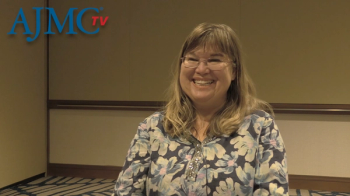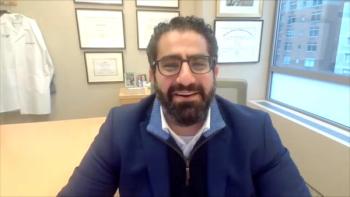
Guidelines for Management of Muscle-Invasive Bladder Cancer
With new guidelines on how to treat and manage muscle-invasive bladder cancer, Jeffrey Holzbeierlein, MD, FACS, professor of urology, director of urologic oncology, interim chair of the department of urology, University of Kansas Health System, provided insight into how the guidelines have changed the management of the disease at the 2018 Genitourinary Cancers Symposium.
With new guidelines on how to treat and manage muscle-invasive bladder cancer, Jeffrey Holzbeierlein, MD, FACS, professor of urology, director of urologic oncology, interim chair of the department of urology, University of Kansas Health System, provided insight into how the guidelines have changed the management of the disease at the 2018 Genitourinary Cancers Symposium.
According to Holzbeierlein, this was the American Urological Association’s first attempt at a true multidisciplinary guideline, and it was created with the American Society for Radiation Oncology, the American Society of Clinical Oncology, and Society of Urologic Oncology.
The methodology for ranking the strength of the studies in the guideline were as followed:
- A well-conducted randomized controlled trial (RCT), exceptional observational studies
- RCTs and or/observational studies with some weakness
- Observational studies that are inconsistent, difficult to interpret
Based on those levels of evidence, the panel either made a strong recommendation, moderate recommendation, or a conditional recommendation.
Also in the guidelines are clinical principles and expert opinions, explained Holzbeierlein. A clinical principle is a statement about a component of clinical care that is very widely agreed upon by urologists or other clinicians for which they may or may not be evidence in the medical literature. An expert opinion is a statement achieved by consensus of the panel, that is based on members’ clinical training, experience, knowledge, and judgement for which there is no published evidence.
“Unfortunately, the prognosis of bladder cancer hasn’t really changed much over the last 30 years,” said Holzbeierlein. “The survival rates obviously vary by the treatment and by stage. We know that most recurrences occur within 2 to 3 years following cystectomy.”
During initial patient evaluation and counseling, the guidelines recommend that curative treatment options should be discussed before determining a plan of therapy that is based on both patient comorbidity and tumor characteristics. Patient evaluation should be completed using a multidisciplinary approach.
The panel felt very strongly that this should be a multidisciplinary approach, said Holzbeierlein. It is recommended that patients who have a new diagnosis of nonmetastatic muscle invasive bladder cancer should visit with a urologist, a radiation oncologist, and medical oncologist when available.
The guidelines provide a strong recommendation that surgically eligible patients with resectable nonmetastatic disease should be offered radical cystectomy with bilateral pelvic lymphadenectomy, combined with neoadjuvant chemotherapy.
According to Holzbeierlein, there is also a lot of evidence supporting multimodality therapy. While there may not be very strong studies suggesting head-to-head RCTs, the panel felt that the available evidence supported the recommendation of neoadjuvant chemotherapy followed by radical cystectomy.
The panel also recommends that patients who undergo neoadjuvant chemotherapy should proceed with radical cystectomy as soon as possible, usually within 4 to 8 weeks after completion of chemotherapy.
“On the patient advocate side, there’s a strong emphasis on making sure patients receive as much detailed counseling regarding the care and management of their urinary diversion prior to discharge from the hospital,” said Holzbeierlein.
For patients newly diagnosed with muscle-invasive bladder cancer who wish to retain their bladder, or for those who are not candidates for radical cystectomy, lateral preservation therapy should be offered to patients, said Holzbeierlein. The panel prefers an approach of transurethral resection of bladder tumor, systemic chemotherapy, and radiation therapy, followed by surveillance.
“A lot of work still needs to be done on surveillance and what is the optimal way to follow our patients after their different types of treatments,” concluded Holzbeierlein. “The data in that area is not very good at this point in time, so that’s an area of further research.”
Newsletter
Stay ahead of policy, cost, and value—subscribe to AJMC for expert insights at the intersection of clinical care and health economics.















































